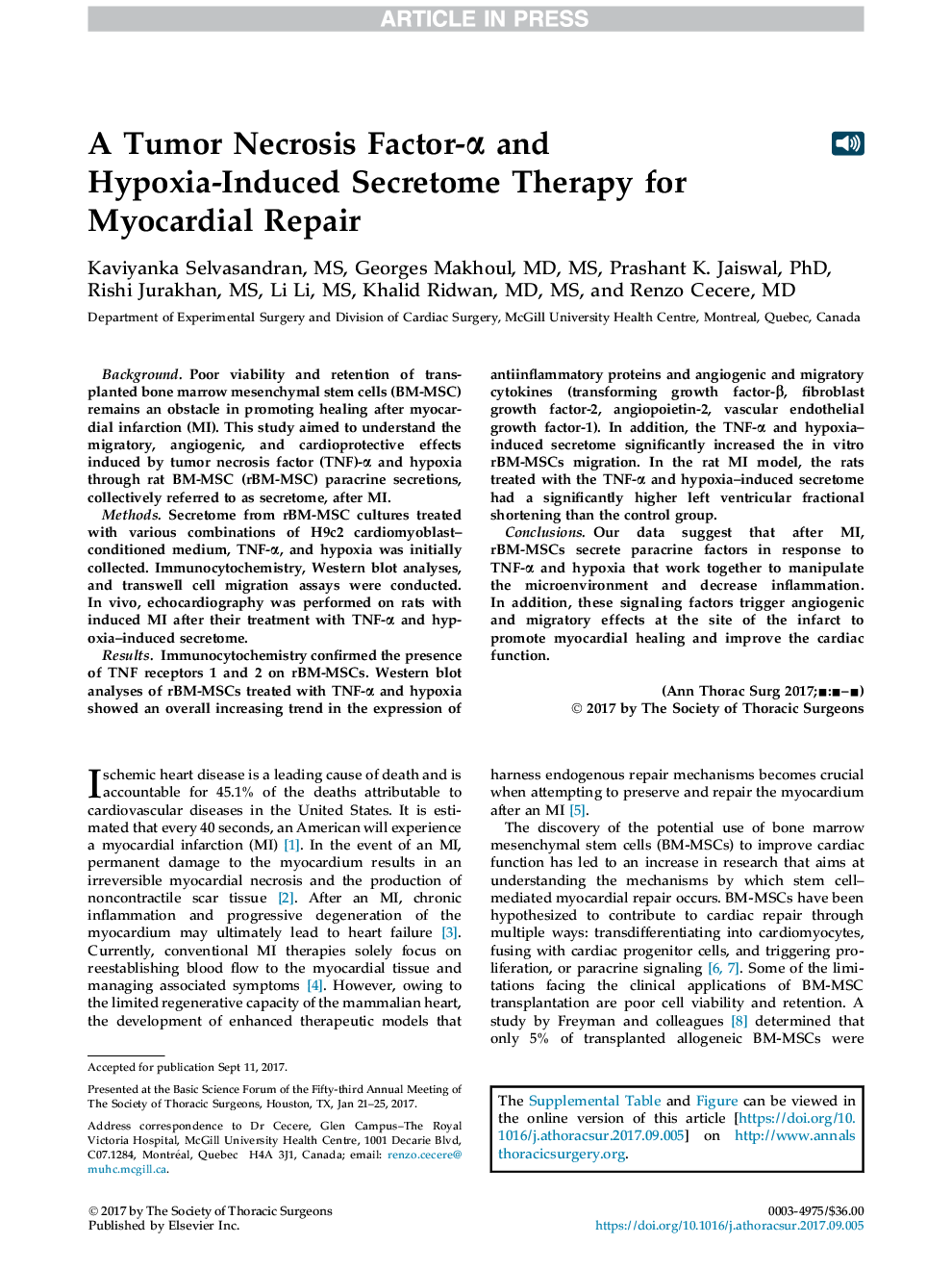| Article ID | Journal | Published Year | Pages | File Type |
|---|---|---|---|---|
| 8652706 | The Annals of Thoracic Surgery | 2018 | 9 Pages |
Abstract
Our data suggest that after MI, rBM-MSCs secrete paracrine factors in response to TNF-α and hypoxia that work together to manipulate the microenvironment and decrease inflammation. In addition, these signaling factors trigger angiogenic and migratory effects at the site of the infarct to promote myocardial healing and improve the cardiac function.
Keywords
LVFSDMEMLVESDLVEDdTNFSDFFGFDAPITNFRBM-MSCTGFMyocardial infarctionangiopoietinAngtransforming growth factorBone marrow mesenchymal stem cellstromal cell–derived factorVascular endothelial growth factorVascular Endothelial Growth Factor (VEGF)fibroblast growth factortumor necrosis factorDulbecco’s modified eagle’s mediumleft ventricular fractional shorteningtumor necrosis factor receptor
Related Topics
Health Sciences
Medicine and Dentistry
Cardiology and Cardiovascular Medicine
Authors
Kaviyanka MS, Georges MD, MS, Prashant K. PhD, Rishi MS, Li MS, Khalid MD, MS, Renzo MD,
